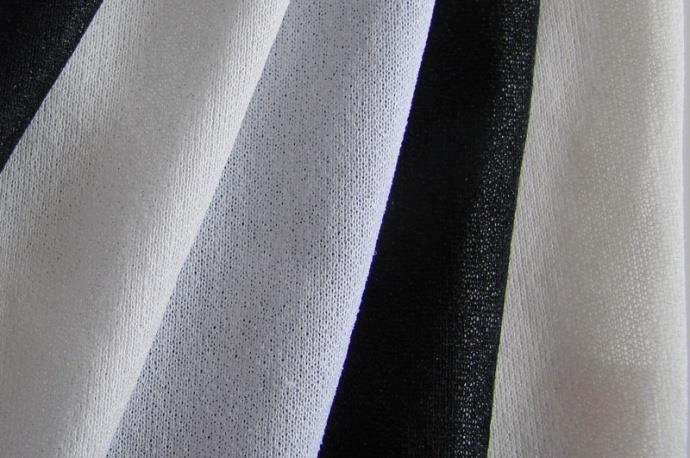In the realm of fashion and garment production, the spotlight often shines on the exquisite fabrics, intricate designs, and the final product that graces runways and store shelves. But there’s an unsung hero working quietly behind the scenes, contributing to the structure, durability, and elegance of clothing woven interlining. This comprehensive guide takes you on a journey into the craftsmanship of a woven interlining manufacturer, where artistry, precision, and innovation combine to elevate the quality and appeal of the garments we wear.
The World of Woven Interlining
What is Woven Interlining?
Woven interlining is a textile material, typically made from natural or synthetic fibers, designed to reinforce and stabilize fabrics. It is used in a wide range of garments, from shirts and blouses to suits, dresses, and outerwear. The primary purpose of woven interlining is to enhance the structure, shape, and durability of the fabric it supports.
The Significance of Woven Interlining
Woven interlining plays a crucial role in fashion and textile industries. It adds body and support to lightweight fabrics, prevents wrinkles and sagging, and creates a professional finish for garments. Without the expertise of woven interlining manufacturers, achieving the desired look and feel of many clothing items would be a considerable challenge.
The Craftsmanship of a Woven Interlining Manufacturer
Material Selection
The journey of woven interlining begins with the careful selection of materials. Woven interlining manufacturers evaluate various factors, including the type of fabric it will support, the desired level of reinforcement, and the garment’s purpose. Common materials include cotton, polyester, viscose, and blends of these fibers.
Weaving Techniques
Craftsmanship in woven interlining manufacturing extends to the weaving process. The choice of weaving technique influences the interlining’s texture, weight, and strength. Manufacturers employ methods like plain, twill, and satin weaves to create interlinings tailored to specific garment requirements.
Precision Cutting
Once the woven interlining fabric is ready, it undergoes precise cutting. Skilled craftsmen ensure that each piece aligns with the garment’s patterns, maintaining a seamless fit that doesn’t compromise comfort or appearance. The intricacy of the cutting process requires attention to detail and expertise.
Bonding and Adhesive Application
The heart of woven interlining craftsmanship lies in the bonding process. Adhesives, often in the form of heat-activated films or powders, are meticulously applied to the interlining material. This step demands precision to avoid excess adhesive, which can compromise the fabric’s drape, and insufficient bonding, which can result in an unstable garment.
Temperature and Pressure Control
The application of heat and pressure during the bonding process is a critical step that requires precise control. Woven interlining manufacturers carefully adjust these parameters to ensure that the adhesive bonds effectively with the fabric without causing damage. It’s a delicate balance of science and artistry.
Quality Control
Every piece of woven interlining undergoes rigorous quality control measures. Craftsmen examine each interlining for imperfections, ensuring that it meets the desired standards of strength, appearance, and performance. Any deviations are addressed to maintain consistency and quality.
The Impact on Garment Production
Improved Garment Structure
The craftsmanship of woven interlining manufacturers significantly improves the structure of garments. It provides additional support to areas that experience tension or stress, such as collars, cuffs, and waistbands. This reinforcement ensures that the garment maintains its shape and appearance over time.
Enhanced Durability
Woven interlining contributes to the longevity of clothing items. By reducing stress on fabric, it minimizes wear and tear, preventing garments from losing their shape, wrinkling excessively, or fraying at the edges. This added durability makes clothing more sustainable.
Professional Finish
The artistry of woven interlining manufacturers helps create a professional finish for garments. It gives clothing a polished look, with crisp, defined lines and a structured appearance. This is especially important for formal wear, business attire, and high-end fashion.
Versatility
Woven interlining is versatile, adapting to various types of fabrics and garments. This versatility allows designers to be creative and produce a wide range of clothing items, each with its unique structure and style.
Innovations in Woven Interlining
The craftsmanship of woven interlining manufacturers continues to evolve. Innovative technologies and sustainable practices are shaping the future of interlining production. Eco-friendly materials, improved adhesives, and advanced bonding techniques are becoming integral to the process, promoting both quality and sustainability in the fashion industry.
Woven interlining, though often unseen, is a cornerstone of garment structure and quality. The craftsmanship of woven interlining manufacturers is essential in ensuring that the clothing we wear not only looks elegant but also maintains its form and durability. As the fashion industry advances, so does the artistry of woven interlining, offering new opportunities for creative design, sustainability, and enduring quality in the world of fashion. The next time you slip into your favorite well-structured blazer or dress, remember that behind the scenes, there’s a woven interlining manufacturer weaving craftsmanship into every stitch.


Leave a Reply